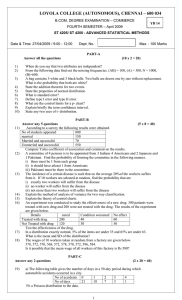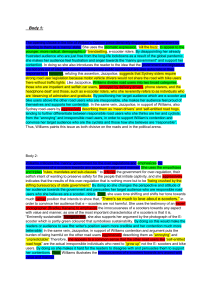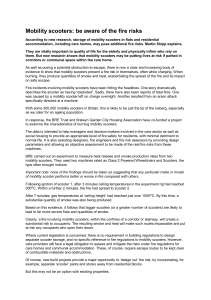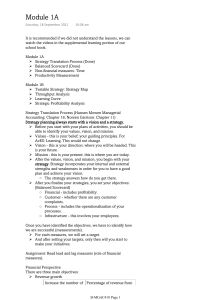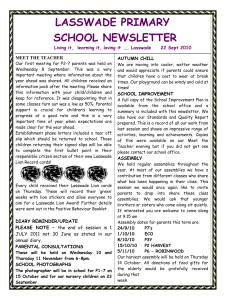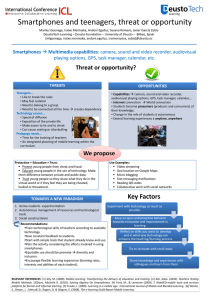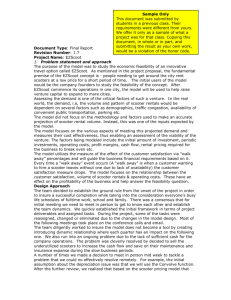December 2012 Intel Project Monthly Report Extend the Safety
advertisement
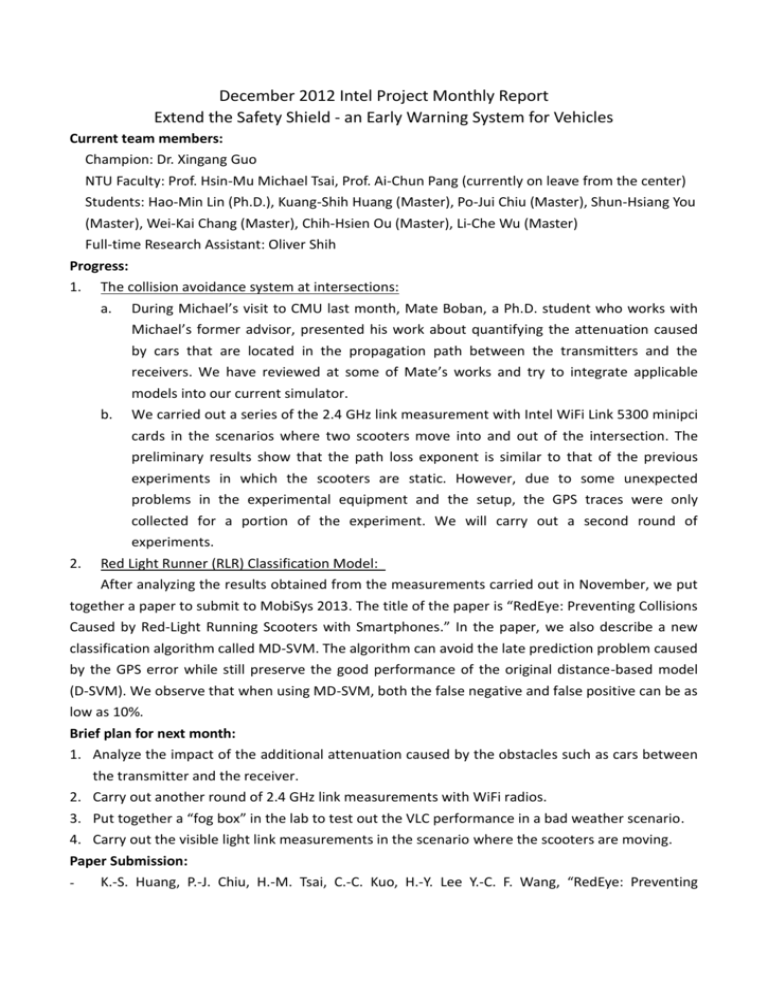
December 2012 Intel Project Monthly Report Extend the Safety Shield - an Early Warning System for Vehicles Current team members: Champion: Dr. Xingang Guo NTU Faculty: Prof. Hsin-Mu Michael Tsai, Prof. Ai-Chun Pang (currently on leave from the center) Students: Hao-Min Lin (Ph.D.), Kuang-Shih Huang (Master), Po-Jui Chiu (Master), Shun-Hsiang You (Master), Wei-Kai Chang (Master), Chih-Hsien Ou (Master), Li-Che Wu (Master) Full-time Research Assistant: Oliver Shih Progress: 1. The collision avoidance system at intersections: a. During Michael’s visit to CMU last month, Mate Boban, a Ph.D. student who works with Michael’s former advisor, presented his work about quantifying the attenuation caused by cars that are located in the propagation path between the transmitters and the receivers. We have reviewed at some of Mate’s works and try to integrate applicable b. models into our current simulator. We carried out a series of the 2.4 GHz link measurement with Intel WiFi Link 5300 minipci cards in the scenarios where two scooters move into and out of the intersection. The preliminary results show that the path loss exponent is similar to that of the previous experiments in which the scooters are static. However, due to some unexpected problems in the experimental equipment and the setup, the GPS traces were only collected for a portion of the experiment. We will carry out a second round of experiments. 2. Red Light Runner (RLR) Classification Model: After analyzing the results obtained from the measurements carried out in November, we put together a paper to submit to MobiSys 2013. The title of the paper is “RedEye: Preventing Collisions Caused by Red-Light Running Scooters with Smartphones.” In the paper, we also describe a new classification algorithm called MD-SVM. The algorithm can avoid the late prediction problem caused by the GPS error while still preserve the good performance of the original distance-based model (D-SVM). We observe that when using MD-SVM, both the false negative and false positive can be as low as 10%. Brief plan for next month: 1. Analyze the impact of the additional attenuation caused by the obstacles such as cars between the transmitter and the receiver. 2. Carry out another round of 2.4 GHz link measurements with WiFi radios. 3. Put together a “fog box” in the lab to test out the VLC performance in a bad weather scenario. 4. Carry out the visible light link measurements in the scenario where the scooters are moving. Paper Submission: ‐ K.-S. Huang, P.-J. Chiu, H.-M. Tsai, C.-C. Kuo, H.-Y. Lee Y.-C. F. Wang, “RedEye: Preventing Collisions Caused by Red-Light Running Scooters with Smartphones,” submitted to ACM International Conference on Mobile Systems, Applications and Services (MobiSys), June 2013
